Are you interested in homesteading, but not sure where to start? This guide is here to help you out! In it, you’ll find all the information and tips you need to get started with homesteading.
You might be surprised to learn that you don’t need much to get started with homesteading. With just a few simple supplies and some basic knowledge, you can be on your way to leading a more self-reliant lifestyle.
I will cover a variety of homesteading ideas to get you started, from the importance of homesteading to ideas for constructing your own homestead. You’ll also find advice for starting and succeeding in your homestead business.
Table of Contents
What is modern day homesteading?
Modern day homesteaders find themselves at the forefront of a new generation that is redefining what it means to live off the land. They grow their own food, raise chickens or other animals, and reduce dependence on commercial supplies.
This new trend shows how individuals feel about their daily needs being met without relying too heavily upon corporations who may not operate in a way that aligns with their own values.
The modern-day homesteader is looking for a way to live off the land, using what they have in their possession. They can range from traditional farms all the way up into urban rooftop gardens and compost bins!
This trend speaks volumes about how connected we’re becoming with our food supply – not just because it’s our source of fuel, but also through cultivating an awareness that we need to find better ways to produce our own food.
Can you make a living off homesteading?
Homesteaders are resourceful, so it isn’t surprising that many of us approach homesteading with an interest in making it a source of income.
In short, YES, you can make a living off of homesteading.
There are a lot of ways to make money from your homesteading space. You could become a full-time farmer, supping your local community with fresh homegrown food. You could grow seedlings to sell to local gardeners. You could use your crafting skills and open a store on Etsy or set up at local craft fairs.
And those are just a few of the options directly tied to your homestead. I won’t even get into all of the option you have for making money online.
But to truly break out of the level of “hobbyist” and into what would be considered a living wage will require volume and a lot of hard work.
Those who make a full-time income from their farms usually have multiple income streams such as blogging, a YouTube channel, publishing books, and selling courses in addition to their farming activities.
Farms will supplement their revenue with farm tours, farm-to-table dinners, and other special events.
Other options include scaling up, hiring employees, outsourcing production and manufacturing, and acquiring wholesale accounts.
Don’t feel guilty if this all feels like too much. It is ok if you decide to keep your homesteading activities as a hobby. It’s ok to put all of your money into backyard chickens who don’t lay eggs or a huge garden that only produces a single tomato.
A bad day in my garden is still better than a good day on a golf course.
What equipment do you need to start a homestead?
A lot of people think they need to wait to start their homesteads. They need land. They need a garden. They need chickens. They need a barn.
Do you know what equipment you actually need to start a homestead?
A brain.
I was going to say that you need two hands, but the hardest working farmer I ever knew only had one hand, so I decided that wasn’t a good place to start.
You don’t need land to start homesteading.
Homesteading is a frame of mind. It is a willingness to push past your comfort zone and try something new. It is a desire to learn and to question the status quo.
You can learn everything you need to know about homesteading while living in an apartment.
You can attend workshops, work at local farms, and organize a community garden.
Will you be 100% self-sufficient? No.
Want to know a secret? Unless someone is living on an island under their own government rule, no one is 100% self-sufficient.
The unfortunate reality of owning land in the United States is we’re still paying property taxes anyway.
But the more important thing to realize is that we are meant to be part of a community. If you want to homestead and do it well, you will need other people surrounding you who understand what you’re trying to do and why you’re trying to do it. You need mentors who can teach and encourage you. And you need other homesteaders who can grow, produce, and provide what you cannot.
We are not machines. We do not have unlimited time and energy to do all of the things all of the time. That is ok. That is why we need community. Community helps spread the load.
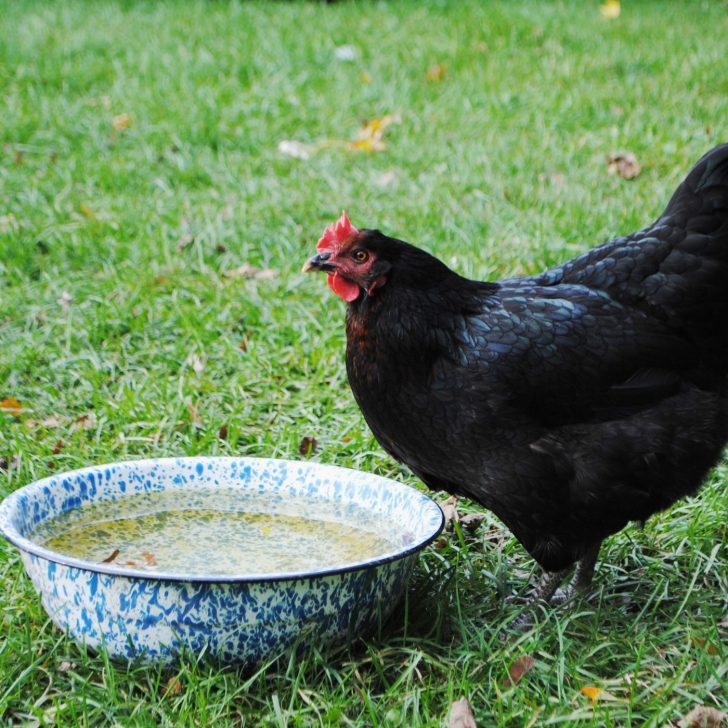
How do you prepare for a homestead?
As I said above, the best way to prepare for your homestead is to start learning as much as you can before you ever buy your land (if you ever buy land).
Once upon a time, I was looking into starting a carriage ride business.
I’m a serial entrepreneur. It was one of many many many business ideas.
The best advice I was given during that process was to buy the horses last.
Buy the harnesses, carriages, trucks, trailers, and barn. Secure the permits. Sign the contracts. But don’t buy the horses until you’re ready to operate.
But aren’t horses kind of a crucial part of having a horse carriage business?
The problem is all of that other stuff takes time. And you can’t start making money until all of it is in place (especially the permits).
Meanwhile, the horses need to eat.
The second you buy the horses, they start costing you money. But they don’t start making you money until you have everything else. So why take on that expense any earlier than absolutely necessary?
The same is true of owning property and animals.
Within the first year of owning our property, we had to replace our well pump. That was $1500.
Then there was fencing and maintaining the property. We had to buy a tractor and a riding lawn mower.
The house itself needed a ton of work.
We were naive to how much more expensive home ownership would be, especially when it came to maintaining acreage and animal pens. Owning a home is so much more than a mortgage payment.
So don’t feel pressured to buy a farm any sooner than absolutely necessary. Save money and focus on gathering knowledge and other resources first. Focus on the animals and land last.
Tips for starting a homestead
Starting your homestead can feel like a very daunting task. It involves making choices and taking risks, and it involves learning new skills. It involves working hard, being persistent, being creative and being prepared for unexpected obstacles.
Yet, it is also one of the most rewarding experiences on this planet! Don’t let fear, uncertainty, or indecisiveness slow you down.
I’ve come up with 10 tips for starting a homestead based on my years of experience, real-life experiments, and personal observations. Take each of these one step at a time and you will find success in your homesteading journey!
Start small
I have two rules for starting any new endeavor:
- Start where you are
Start with what you have
Every single day, I see a new homesteader post to Facebook that they just purchased land and they are looking to fill it with animals. It like there is as void that they have to fill.
I’ve stopped telling them what a bad idea this is.
Granted, there is usually already someone else in the comments reprimanding them on their decision, but I’ve also learned that these people can’t see reason. They don’t know what they don’t know, and they can’t be persuaded otherwise.
So instead, I’ll tell you here. This is a recipe for disaster.
You will end up overwhelmed, out of money, and burnt out. You will give up on homesteading and decide this just isn’t for you. Worse yet, you will convince yourself that there is something fundamentally wrong with you because you couldn’t do something that seems so simple for so many others.
This is where the comparison trap gets us into trouble. Don’t compare your chapter one to someone else’s chapter ten.
Approach your journey one skill, one task, one homestead project at a time. Do not move on until you have mastered and learned to maintain that thing before you move on to the next thing.
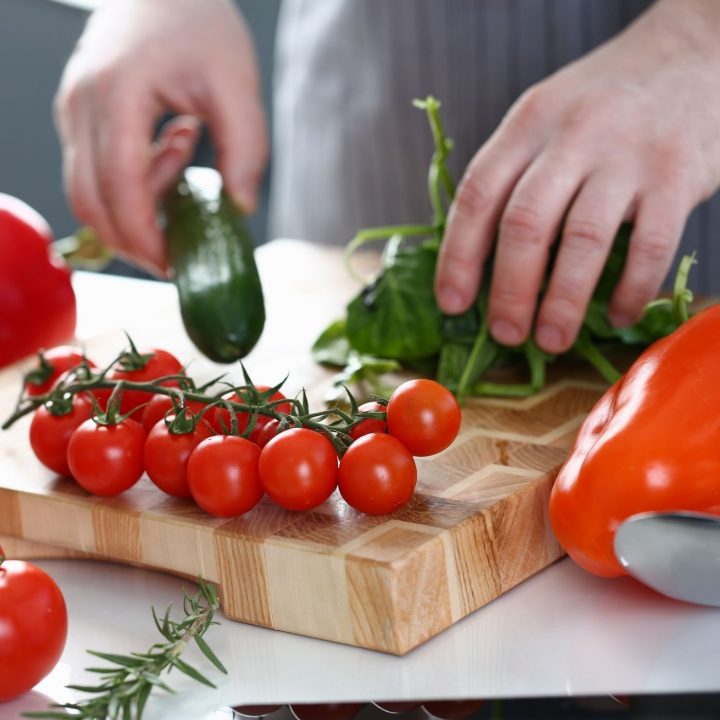
Get comfortable in the kitchen
Growing your own food is a rewarding experience, but it’s only the beginning. Once you’ve grown and raised your bounty, it’s time to start cooking!
The most sustainable way to live is by using your own two hands in the kitchen.
Learning to cook from scratch and eat seasonally is one of the most valuable skills you can learn and use to be self-sufficient in many different ways. Preparing meals can also help you save money and have more control over what goes into your food.
Some of my most valuable investments in the kitchen have been my cast iron cookware, KitchenAid stand mixer, a good set of knives, and a couple stock pots.
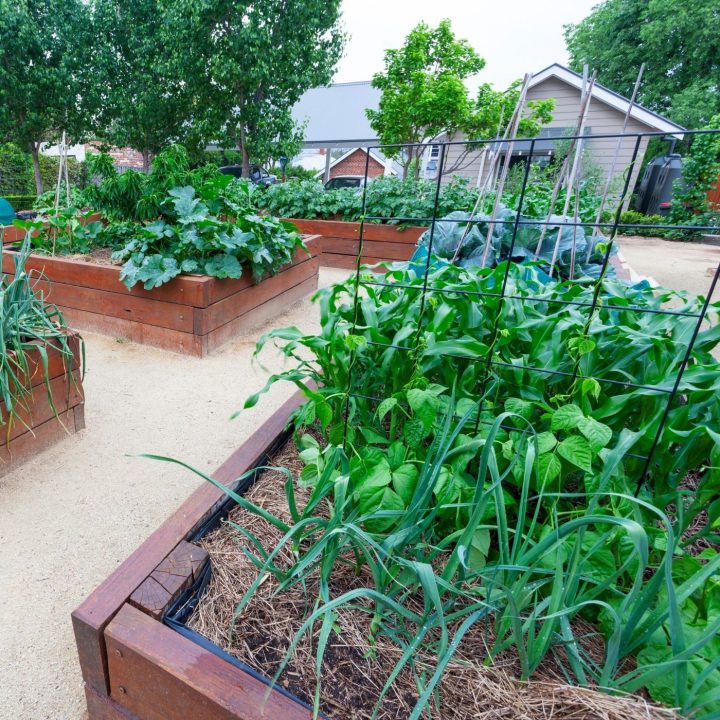
Grow a vegetable garden
If you have the space available, a vegetable garden is a great next step on your journey to a self sufficient life. You can start with a small vegetable garden while you learn some basic gardening and composting skills, and then move on to a larger area as you learn to care and maintain it.
A container garden or small raised garden bed is a great starting point, especially if you have poor soil.
It’s much better to grow one thriving tomato plant than to try to grow everything and struggle to keep it alive.
Gardening is a skill that takes a lot of practice. You will never learn everything there is to know. Keep notes and learn everything you can. Experiment and build your knowledge one gardening project at a time!
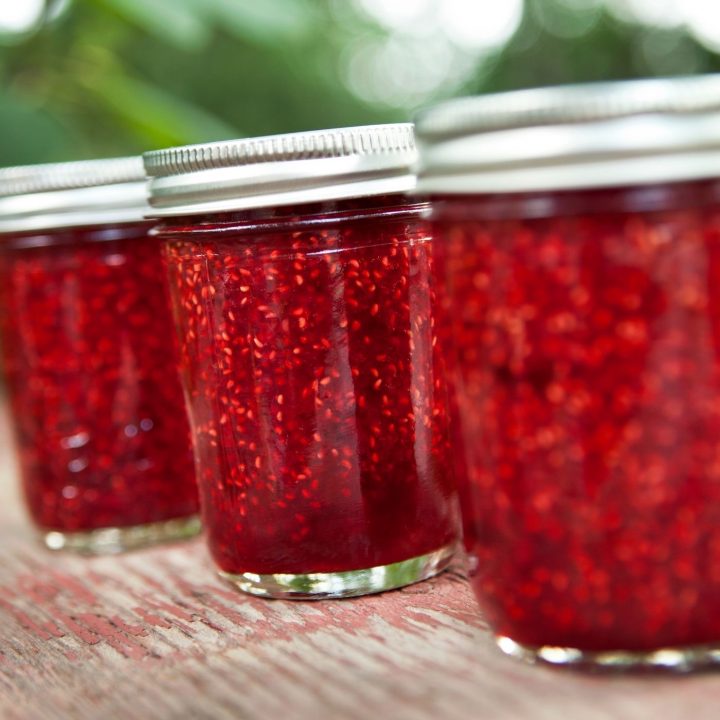
Learn how to preserve food
Once you have started to grow a bounty of vegetables in your garden, you will start to wonder how to keep everything from spoiling.
After all, how many green beans can one family eat in a week? And why are they all coming ripe at the same time?
I won’t explore the importance of succession planting right now, but there is still that likelihood that you will want to have some of your garden harvest available to you in the wintertime.
This is where food preservation comes in.
Preserving food maintains its quality and keeps it from spoiling. It can include canning, freezing, fermenting, dehydrating, and freeze drying.
One of the easiest ways to get started with canning food is to make fruit jam and water bath can it in mason jars. I will pick several pounds of seasonal fruit from local u-pick farms to make preserves that will last us all year.
Water bath canning requires very basic tools to get started, and basic jam recipes are included in most packages of commercial pectin.
For more information about preserving food, visit the National Center for Home Food Preservation for the latest information about safe methods of food preservation.
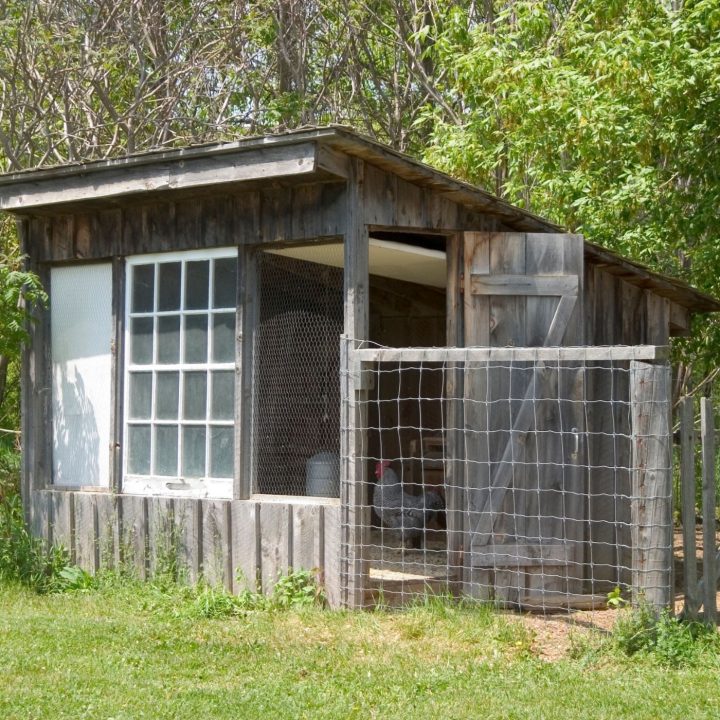
Build a chicken coop
Raising backyard chickens is an easy and inexpensive way to branch out into raising farm animals.
However, you will need a secure chicken coop because every predator likes the taste of chicken.
The trouble with most chicken coops that are commercially available is that they are made from very unstable materials that can easily be damaged by a raccoon looking for its next meal.
If you aren’t handy or cannot afford to have a contractor build a coop for you, you can often find a used shed that can be reenforced for use as a chicken coop.
Make sure the coop has good air flow, but is free from drafts. Secure any openings with wood or hardware cloth.
Do not use chicken wire. It is useless and most predators can rip right through it. Spend the extra money on hardware cloth. You can thank me later.
Bury wire around your coop and/or chicken yard to prevent predators from digging under.
Have a door on your coop that can be closed and secured at night. Make sure the latch is something that cannot be undone. The rule of thumb is that if a toddler can undo it, so can a raccoon.
Add more farm animals
If and only if chickens have not completely overwhelmed you, and you have the space and resource to care for more animals, then by all means, add more animals.
Raising ducks, turkeys, and rabbits are good choices, as are a few goats for milk. You can also keep bees to help pollinate your garden.
Just remember that each of these additional responsibilities requires a learning curve and ongoing care. Be sure you educate yourself on each one first before adding another.
Make a list of projects & ideas
The homestead life comes with a never ending list of homestead projects.
This could include a list of new skills that you want to learn such as soap making or starting a worm farm.
It could be a laborious outdoor project such as installing solar panels, building new garden raised beds, or digging a root cellar.
Or it could be the endless number of things your farm animals break such as coops, barns, fence, and water lines.
You will never run out of things to do.
Prioritize
Are you beginning to see how homesteaders can fall into the trap of trying to do it all?
There is an easy way for you to keep this from happening.
You need to decide what is a priority for you.
Prioritizing will not only help you focus on which projects and ideas to tackle first, but it will also help to keep you from comparing your journey to that of everyone else on Instagram.
Why compare yourself when their priorities are obviously not aligned with your own?
That’s not to say you will always remember your priorities.
Sometimes we get so focus on what feels urgent in the moment that we start to forget the biggest picture that we’re supposed to be focused on.
Keep a visual reminder where you can be inspired to stay focused on what matters. A Vision Board can work well for this since you can use pictures to remind you of what’s most important.
Danielle and I have actually talked about the importance of prioritizing and setting goals multiple times on our podcast, but our episode on Goal Setting for Homesteaders will be particularly helpful for you.

Never stop learning
There is always more to learn in life, no matter how self-sufficient you may be. Pursuing learning opportunities helps keep you sharp, flexible, and capable of responding to whatever life throws your way. And who doesn’t want that?
Living a self-sufficient life requires always pursuing new skills. Learning how to do things for yourself not only saves you money, but it also makes you more self-reliant and capable.
Finally, learning also allows you to keep up with the latest trends and technologies in homesteading, which can make your life easier and more efficient.
Have fun & enjoy the journey
The homestead life is not all work and no play. In fact, it can be quite enjoyable if you let it.
One of the best things about homesteading is that it gives you a chance to slow down, enjoy the simple things in life, and connect with nature.
So make sure to take some time each day to just relax and enjoy your homestead.
You may not have a perfect homestead, but that’s okay. Embrace the imperfections and enjoy the journey.
Homesteading is a never-ending adventure of learning and discovery. There is always something new to learn and new ways to improve your homestead.
So never stop learning and evolving. And most importantly, have fun!
Final Thoughts
So, if you’re feeling overwhelmed by all the farm animals you could potentially add to your homestead, take a deep breath and remember that each of these new additions requires a learning curve and ongoing care.
Prioritize what’s important to you, keep a visual reminder of your priorities where you can be inspired to stay focused, and never stop learning.
And most importantly, have fun and enjoy the journey!
Do you have any other tips on how to manage homestead animals? Share them in the comments below!
